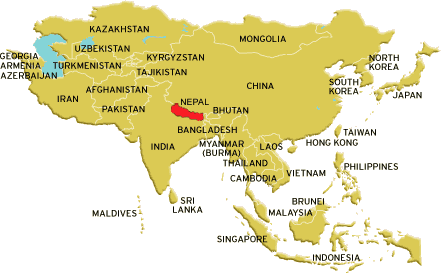Variation in the physical and chemical aspects of the environment are common and normal.The kinds of plants, together with climatic and edaphic factors, influence the number and distribution of the various kinds of animals, and turn, many influence plants. Various ecological factors such as light, temperature, soil, water, etc. vary with time (temporal variation) and space (spatial variation). These factors are involved at each level of organization. Various ecological factors have been grouped into direct and indirect factors. Direct factors are light, temperature, moisture of air or soil and soil nutrients. Indirect factors include the wind, altitude, slope of the land and soil & soil organism.
 All direct factors are major but temperature and moisture vary much in an environment. Their variation has great influence on distribution of plants and animals in various ways. Warm blooded animals tend to maintain their body temperature both in cold and hot conditions by various ways such as fact layer in the skin, hair or feathers, increasing metabolic rate etc. Temperature variation caused due to different intensity of solar radiations has both spatial and temporal variations among the plants. Temperature variation is it decreases towards the poles. Besides these plant cover, water content of soil , topographical factors, etc. also affect the temperature of the area.
All direct factors are major but temperature and moisture vary much in an environment. Their variation has great influence on distribution of plants and animals in various ways. Warm blooded animals tend to maintain their body temperature both in cold and hot conditions by various ways such as fact layer in the skin, hair or feathers, increasing metabolic rate etc. Temperature variation caused due to different intensity of solar radiations has both spatial and temporal variations among the plants. Temperature variation is it decreases towards the poles. Besides these plant cover, water content of soil , topographical factors, etc. also affect the temperature of the area.

 Moisture also varies according to place, season, altitude etc. Rainwater, snowfall, dew, frost, hail etc. result the change of moisture of atmosphere. Atmosphere moisture is in the form of vapour, known as humidity and humidity of air is expressed in terms of relative humidity ( i.e % of moisture in air compared to the amount of moisture which air can hold at saturations at the existing temperature). Humidity is affected by many factors such as light intensity, temperature, altitude, wind, exposure water content of soil etc.
Moisture also varies according to place, season, altitude etc. Rainwater, snowfall, dew, frost, hail etc. result the change of moisture of atmosphere. Atmosphere moisture is in the form of vapour, known as humidity and humidity of air is expressed in terms of relative humidity ( i.e % of moisture in air compared to the amount of moisture which air can hold at saturations at the existing temperature). Humidity is affected by many factors such as light intensity, temperature, altitude, wind, exposure water content of soil etc.

 All direct factors are major but temperature and moisture vary much in an environment. Their variation has great influence on distribution of plants and animals in various ways. Warm blooded animals tend to maintain their body temperature both in cold and hot conditions by various ways such as fact layer in the skin, hair or feathers, increasing metabolic rate etc. Temperature variation caused due to different intensity of solar radiations has both spatial and temporal variations among the plants. Temperature variation is it decreases towards the poles. Besides these plant cover, water content of soil , topographical factors, etc. also affect the temperature of the area.
All direct factors are major but temperature and moisture vary much in an environment. Their variation has great influence on distribution of plants and animals in various ways. Warm blooded animals tend to maintain their body temperature both in cold and hot conditions by various ways such as fact layer in the skin, hair or feathers, increasing metabolic rate etc. Temperature variation caused due to different intensity of solar radiations has both spatial and temporal variations among the plants. Temperature variation is it decreases towards the poles. Besides these plant cover, water content of soil , topographical factors, etc. also affect the temperature of the area.
 Moisture also varies according to place, season, altitude etc. Rainwater, snowfall, dew, frost, hail etc. result the change of moisture of atmosphere. Atmosphere moisture is in the form of vapour, known as humidity and humidity of air is expressed in terms of relative humidity ( i.e % of moisture in air compared to the amount of moisture which air can hold at saturations at the existing temperature). Humidity is affected by many factors such as light intensity, temperature, altitude, wind, exposure water content of soil etc.
Moisture also varies according to place, season, altitude etc. Rainwater, snowfall, dew, frost, hail etc. result the change of moisture of atmosphere. Atmosphere moisture is in the form of vapour, known as humidity and humidity of air is expressed in terms of relative humidity ( i.e % of moisture in air compared to the amount of moisture which air can hold at saturations at the existing temperature). Humidity is affected by many factors such as light intensity, temperature, altitude, wind, exposure water content of soil etc.


